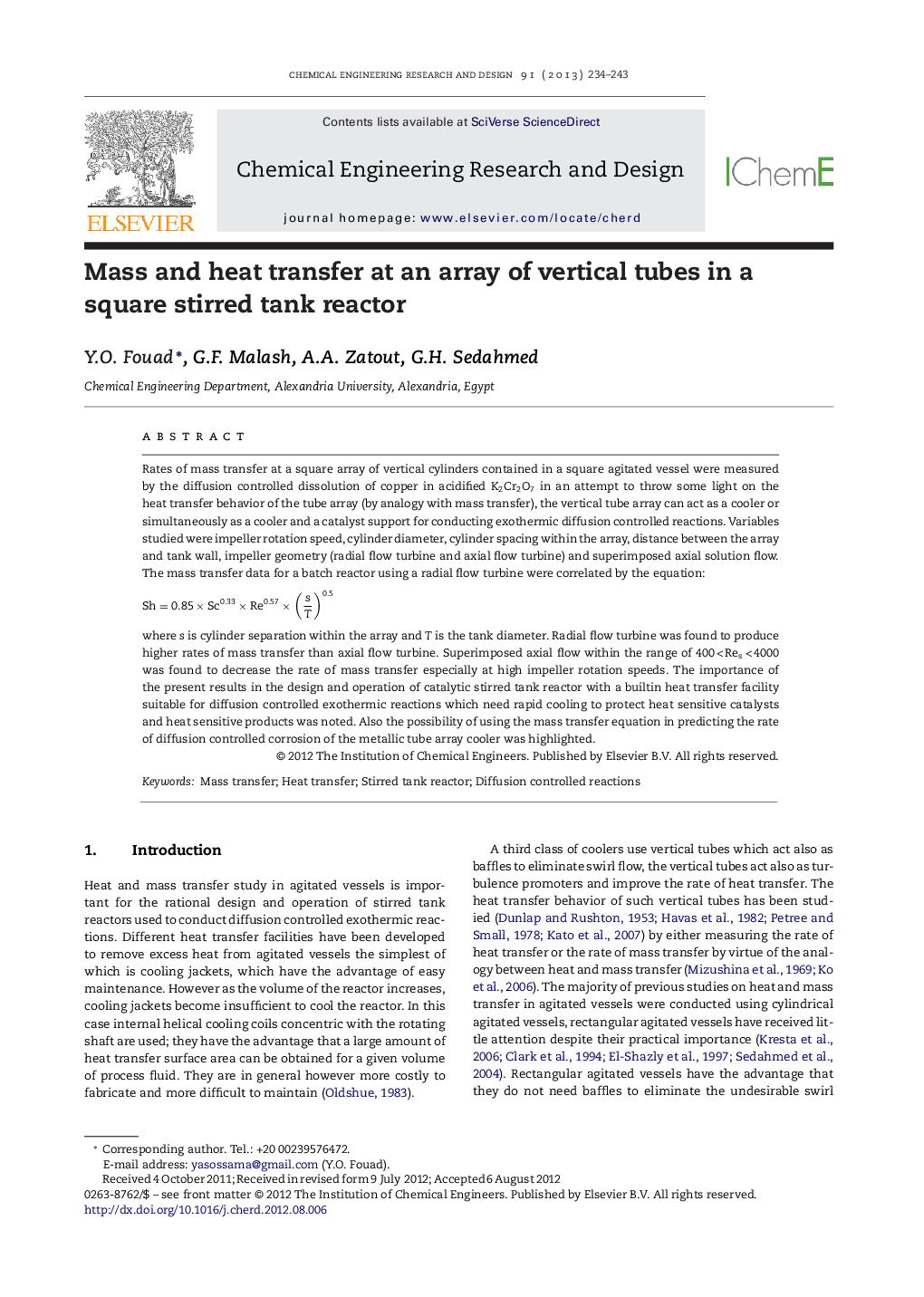| Article ID | Journal | Published Year | Pages | File Type |
|---|---|---|---|---|
| 620849 | Chemical Engineering Research and Design | 2013 | 10 Pages |
Rates of mass transfer at a square array of vertical cylinders contained in a square agitated vessel were measured by the diffusion controlled dissolution of copper in acidified K2Cr2O7 in an attempt to throw some light on the heat transfer behavior of the tube array (by analogy with mass transfer), the vertical tube array can act as a cooler or simultaneously as a cooler and a catalyst support for conducting exothermic diffusion controlled reactions. Variables studied were impeller rotation speed, cylinder diameter, cylinder spacing within the array, distance between the array and tank wall, impeller geometry (radial flow turbine and axial flow turbine) and superimposed axial solution flow. The mass transfer data for a batch reactor using a radial flow turbine were correlated by the equation:Sh=0.85×Sc0.33×Re0.57×sT0.5where s is cylinder separation within the array and T is the tank diameter. Radial flow turbine was found to produce higher rates of mass transfer than axial flow turbine. Superimposed axial flow within the range of 400 < Res < 4000 was found to decrease the rate of mass transfer especially at high impeller rotation speeds. The importance of the present results in the design and operation of catalytic stirred tank reactor with a builtin heat transfer facility suitable for diffusion controlled exothermic reactions which need rapid cooling to protect heat sensitive catalysts and heat sensitive products was noted. Also the possibility of using the mass transfer equation in predicting the rate of diffusion controlled corrosion of the metallic tube array cooler was highlighted.
► A new reactor suitable for partially or fully diffusion controlled reactions was studied. ► It consists of square agitated vessel with an array of vertical separated cylinders. ► The design was found to have high rate of mass transfer at the array of cylinders. ► A dimensionless mass transfer equation was obtained to scale up the reactor. ► It can be used in wet oxidation, organic synthesis, biochemical reactions and dialysis.
